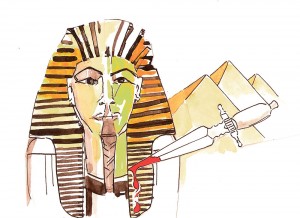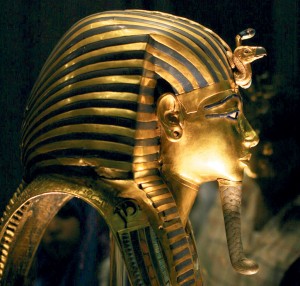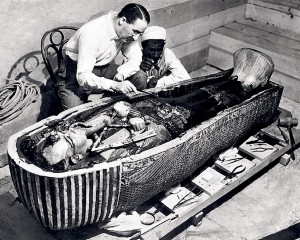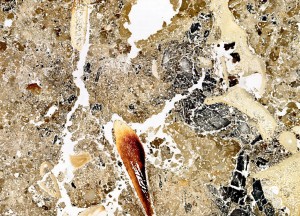SUNDAY, 7 NOVEMBER 2010

Archaeology is undergoing dramatic changes in its research methodology. Historically, it has been an individualistic and humanities-based discipline, but scientific methods are being increasingly used. Projects are becoming collaborative, and publications now resemble the multi-author articles common in more traditional scientific subjects. One example is a study published in the February 2010 edition of the Journal of the American Medical Association (JAMA), in which a team of researchers based in Cairo shed light on some of the mysteries surrounding King Tutankhamun. The authors’ extensive use of biomedical techniques highlights the changes taking place in the field.
King ‘Tut’ was a pharaoh of the New Kingdom, an era of relative peace and prosperity within Egypt that lasted from the mid-16th to 11th century BC. Previous researchers had used a limited amount of evidence to hypothesise that King Tut died of a genetic disease such as Marfan’s syndrome, which weakens the connective tissue in the body. A radiological scan of his foot showed that he had a malformed arch, suggesting a disease of this type. Furthermore, the depictions of King Tut that decorate his tomb portray him with elongated features, characteristic of Marfan’s. Canes that were found in his tomb, intended to help him walk in the afterlife, also support this theory. However, no firm conclusions could be drawn without more rigorous biomedical experimentation.
The Cairo research team undertook this challenge by analysing the DNA from the bone tissue of eleven royal mummies of the New Kingdom, including King Tut. They tested Tut for Marfan’s syndrome and discovered that he did not have Marfan’s, but did suffer from avascular bone necrosis, a disease characterised by a breakdown of bone tissue that results from a prolonged lack of blood circulation. This would explain the canes in Tut’s tomb, but it is unlikely that this disease resulted in his death. By analysing the other mummies, the researchers were able to identify the parents of King Tut, discovering in the process that they were also siblings. This inbreeding may have contributed to Tut’s early demise by predisposing him to genetic defects that affected his health.
Papyri from the era of the New Kingdom also suggest that Tut may have suffered from malaria. Four of the mummies analysed by the Cairo team, including Tut, tested positive for AMA1, a protein found on the malarial parasite. AMA1 is responsible for the binding of the parasite to human cells, and its presence in the body is a sure sign of infection. Many of the initial media reports describing the study misquoted it and claimed that the team found definitive proof that Tut died of malaria. However, although this is another possible explanation for his death, the presence of AMA1 does not necessarily mean that Tut died of malaria; he could have been infected with the parasite without actually succumbing to it.
 Another mystery addressed by the study is the feminised appearance of King Tut in the murals and sculptures in his tomb; researchers have often queried whether he might have been intersex. Genetic testing by the Cairo team determined that he was biologically male, having an XY set of sex chromosomes. The researchers therefore ascribe the feminine depictions of King Tut more to the artistic style of the time rather than his actual appearance.
Another mystery addressed by the study is the feminised appearance of King Tut in the murals and sculptures in his tomb; researchers have often queried whether he might have been intersex. Genetic testing by the Cairo team determined that he was biologically male, having an XY set of sex chromosomes. The researchers therefore ascribe the feminine depictions of King Tut more to the artistic style of the time rather than his actual appearance.Using genetic testing and other biomedical techniques to answer some of the questions surrounding the life and death of King Tut is not only a huge technical achievement, it also represents a change in archaeological tradition. Archaeologists and scientists are now forming teams to solve problems together. This practice has become common here in Cambridge according to Kate Spence, an archaeologist at the University. A number of labs are now dedicated to applying scientific methods to archaeology. For example, Cambridge runs a geoarchaeology lab that specialises in micromorphology. This technique is used to determine the composition of materials such as the floor of an ancient room or the surface of an ancient cooking vessel. In an isotope lab, the bones of ancient people are examined to determine their diet and land of origin. Palaeobotany is another example of a technique now commonly used, in which samples of ancient plants are analysed in an attempt to reconstruct the environments of ancient peoples.
Even with the integration of scientific methods, the core of archaeology remains unchanged. “There will always be a place for individual work and people thinking through questions synthetically,” says Spence; “Good archaeologists have always worked with all of the evidence that is available.” These techniques are simply providing archaeologists with more evidence to consider. However, the addition of scientific methods does present some challenges to archaeological culture. Spence notes that it is easier to fund archaeological projects that take advantage of scientific methods. Also, articles published in medical journals such as JAMA gain more attention and ‘impact’ than articles published in archaeological journals. This means that more and more archaeologists are being pushed to use the latest cutting-edge techniques.
Although the application of scientific methods to archaeology has become common in other countries, it has thus far been limited in Egypt due to post-colonial politics. Since the 1970s, the Egyptian government has banned the removal of any antiquities from the country. This policy was instated in order to curb the extensive exporting of objects from Egypt into Western museums and private collections. Previously, archaeologists based in the UK would bring samples from the excavation site to machinery located at their home institution (as they still do from excavation sites in other countries). But due to Egypt’s antiquities policy, any scientific research performed at new excavations must be conducted within Egypt. This makes applying new techniques to the field of Egyptology a very slow process, since most of archaeology’s latest scientific tools are developed and located in universities outside of Egypt.
The introduction of scientific techniques has opened up new avenues of investigation to archaeologists. By using some of the most advanced biomedical technology available, Egyptian researchers were able to properly address some of the centuries-old questions surrounding King Tut and his family. In doing so, they highlighted the innovations and disciplinary changes that are transforming archaeology and helping to solve some of the ancient world’s greatest mysteries.
Maggie Jack is an MPhil student in the Department of History and Philosophy of Science


